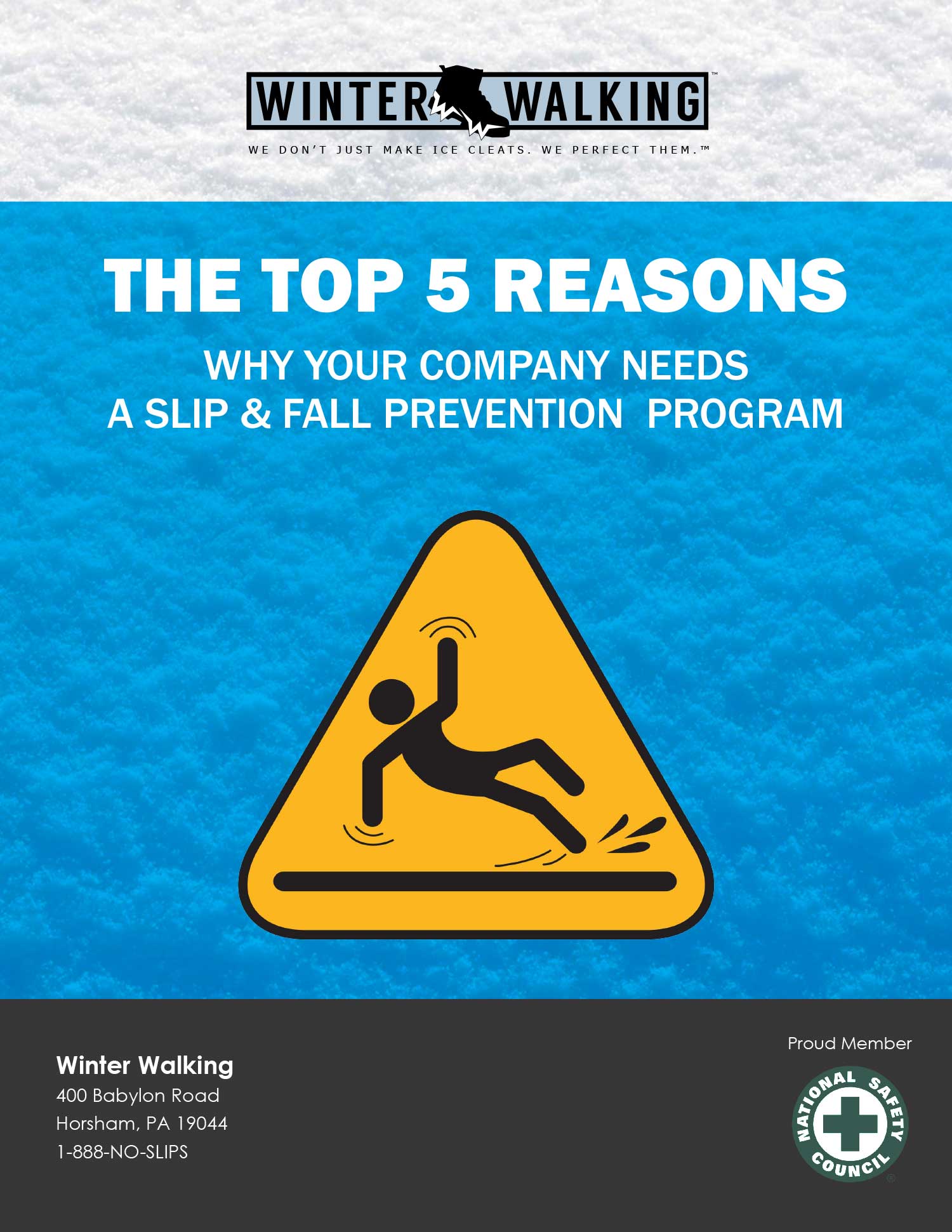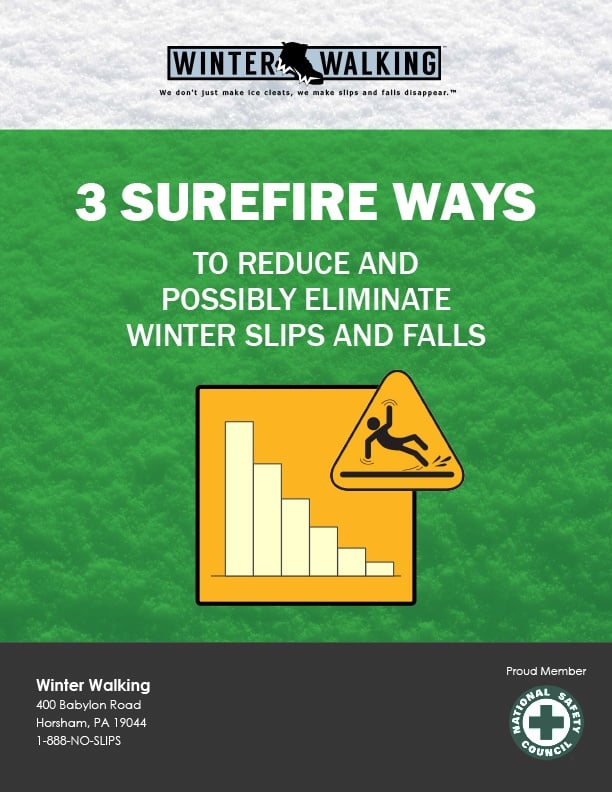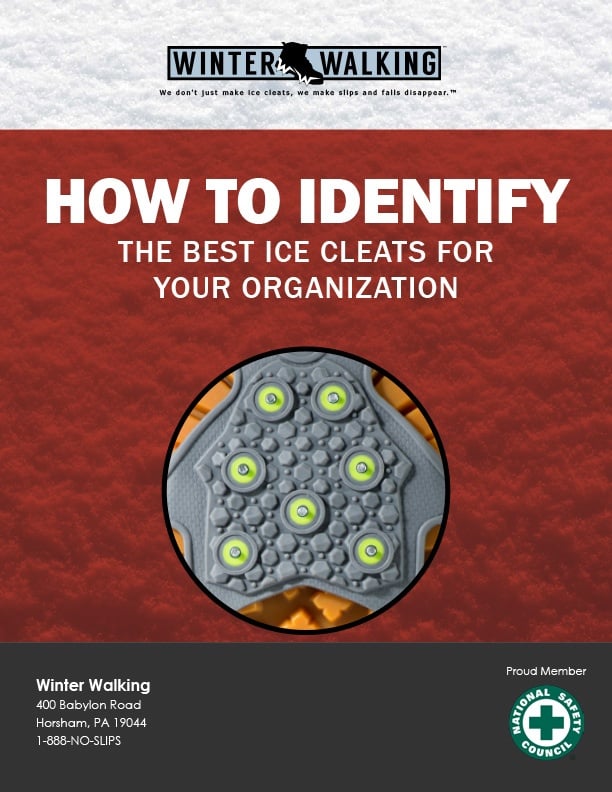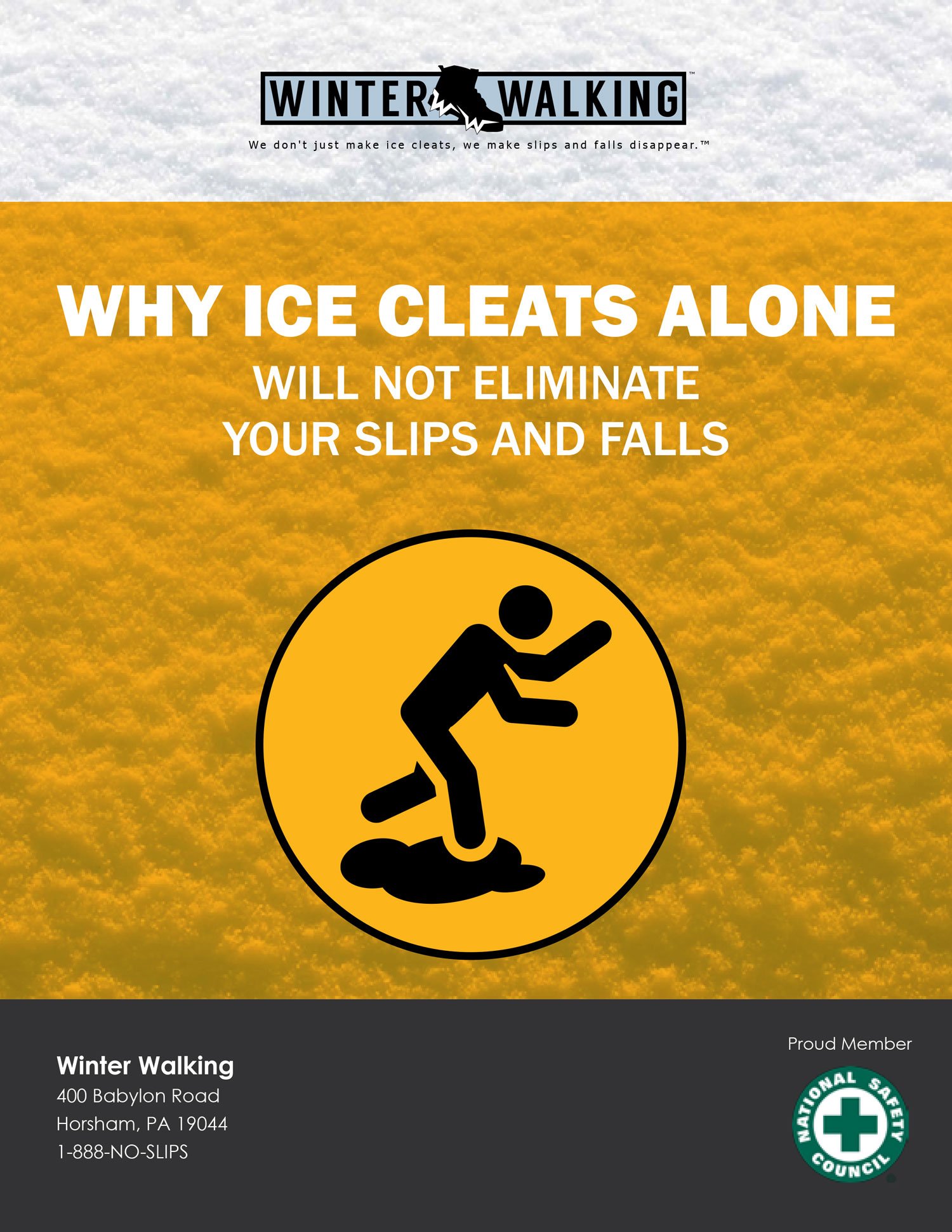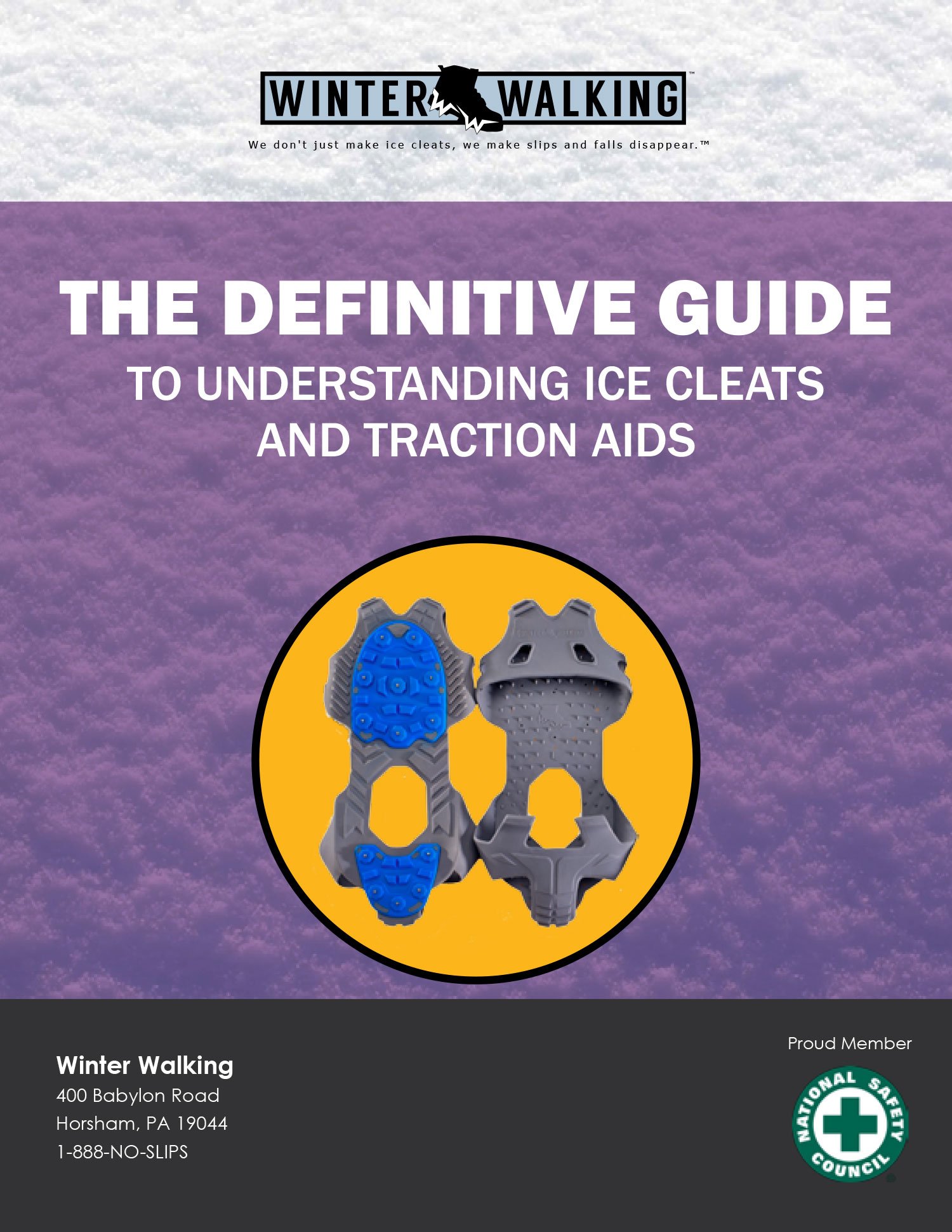Now, some safety professionals hear the word “winter” and, all of the sudden, the mood in the room changes. Because they know their job has become even tougher. The challenge? Trying to find the easiest and safest ways to protect their employees who work in the ice and snow.
So I’d like to ask you a few questions:1) Are you tired of searching online, trying to guess which ice cleat or traction aid will be best?
2) Are you tired of buying a recommended traction aid, only to realize that your people HATE wearing them?
3) What do I need and want from a traction aid besides better traction on ice and snow?
Knowing the answer to this last question will save you a lot of time, aggravation and wasted money. Think in advance about your criteria or wish list regarding what you need and want from traction aids and you’ll have better success than you may have experienced in years past.
Something else to think about...
If you have employees who walk on different outdoor surfaces (and maybe inside, too), the last thing those employees want is an ice cleat that needs to be removed over and over again. Traditional ice cleats and boot spikes can become slip hazards on hard surfaces, like steel, tile, concrete etc. So instead, look for ice cleats and snow grips for shoes that are safe for wearing indoors and outdoors.
If your employees are outdoors for extended periods of time and don’t need to worry about different walking surfaces, you can concentrate on traditional ice cleats and boot spikes – easy on and off, lightweight and plenty of aggressive traction.
So ask the right questions. And think about your indoor vs. outdoor needs in order to eliminate those headaches. And those winter slips and falls!
Thank you for reading. If you found value in this post, please share it with your LinkedIn network or simply “like” it.
Bill Coyne is the VP of Sales for Winter Walking. He has been helping organizations across a wide variety of business sectors eliminate workplace slips and falls incidents in ice and snow for over 15 years. Email Bill bill@winterwalking.com or visit www.winterwalking.com for additional helpful information and resources.



